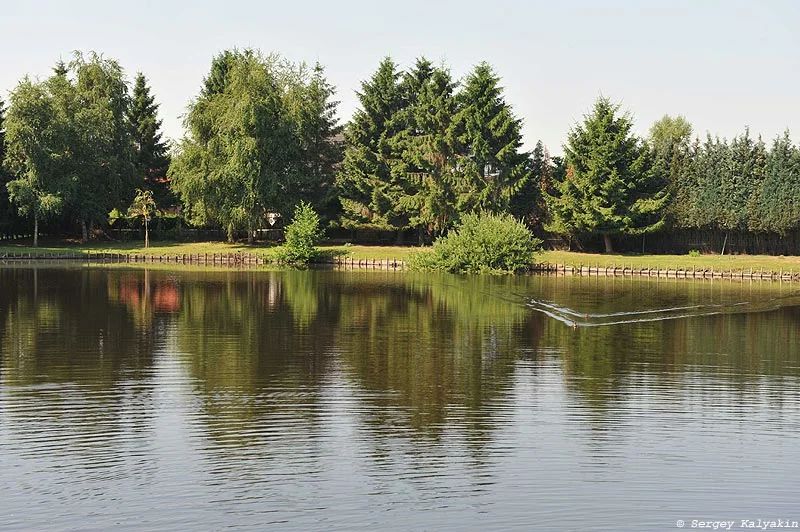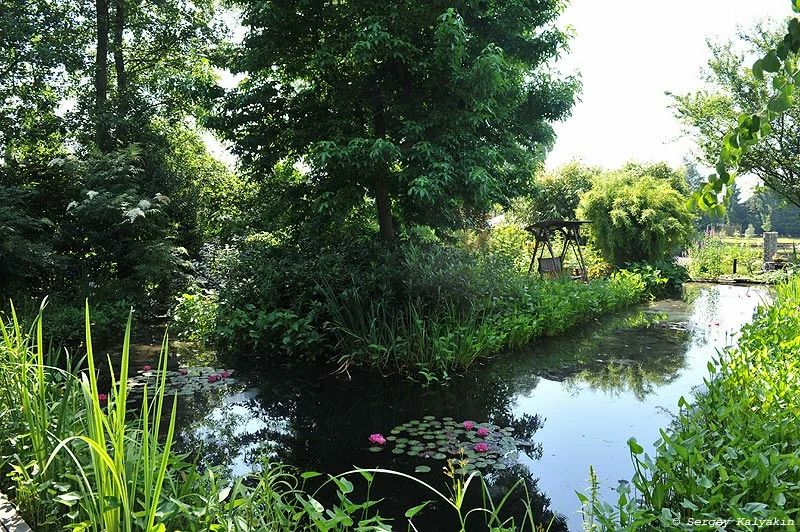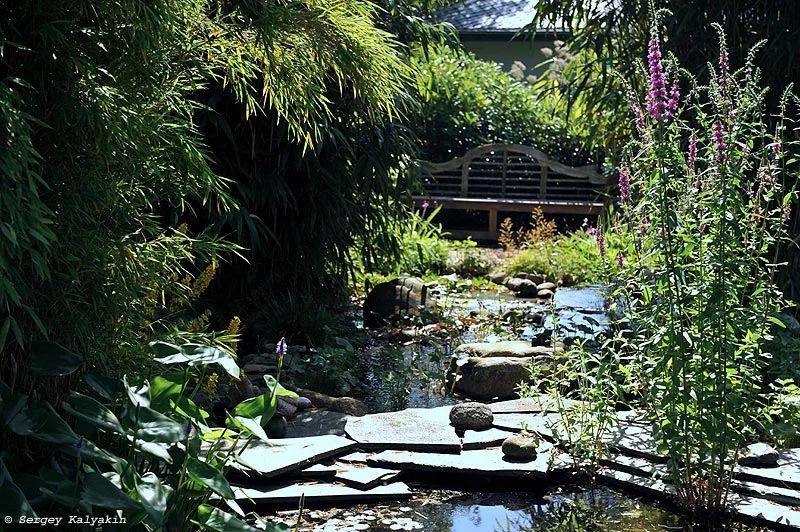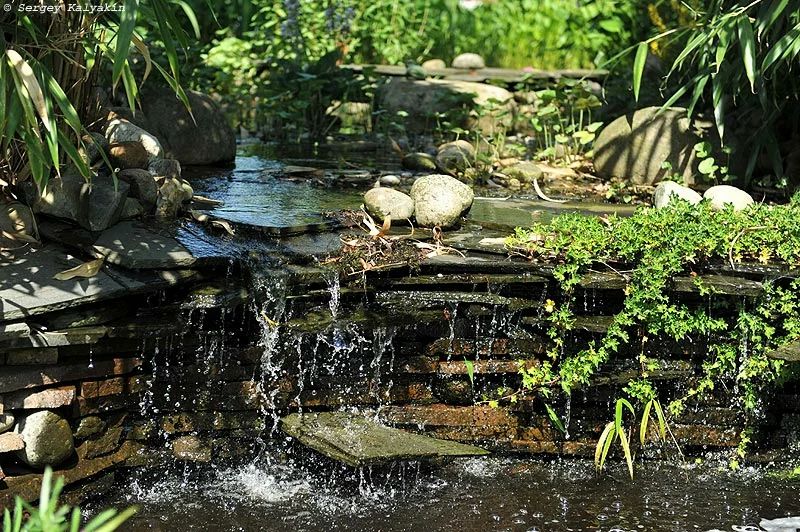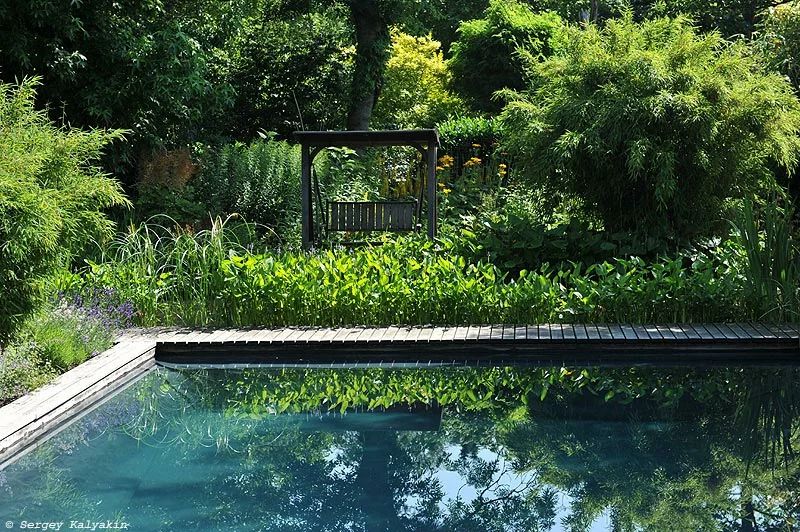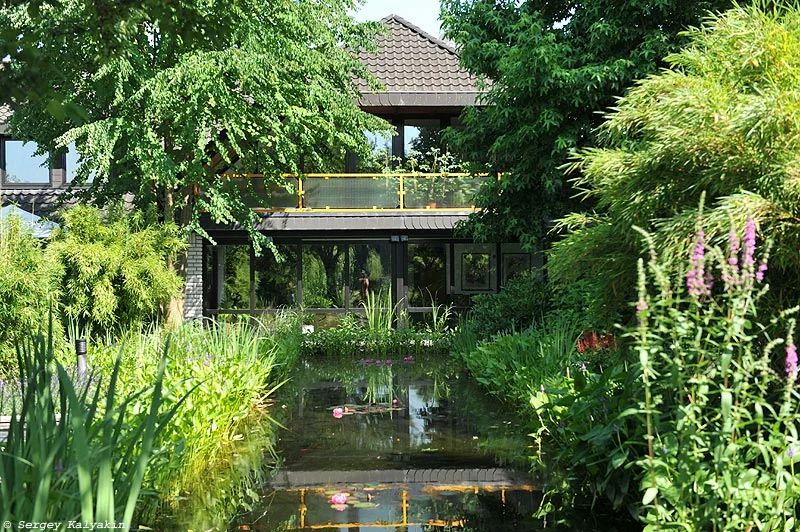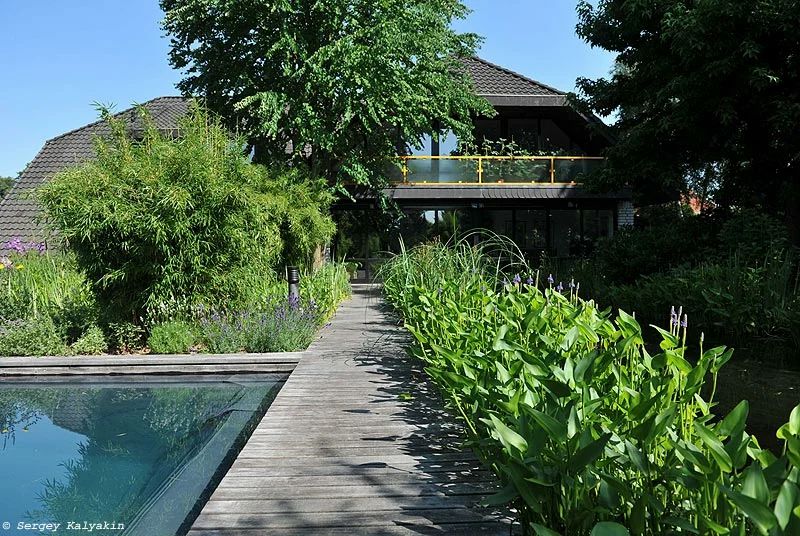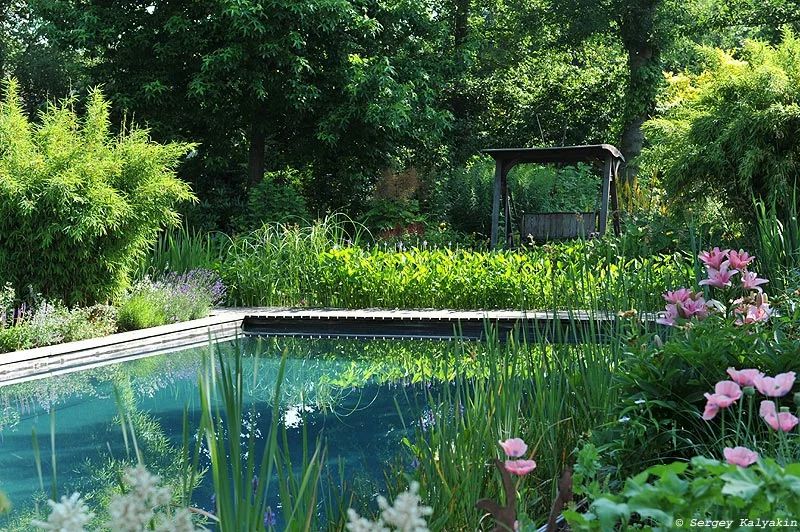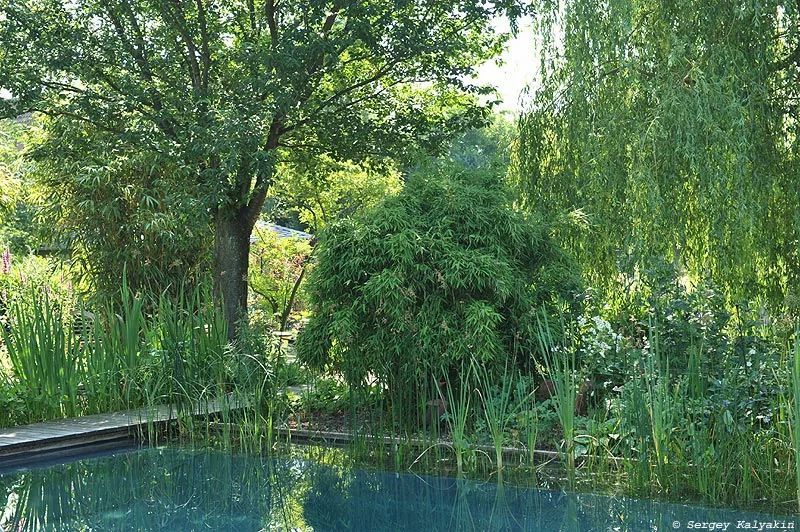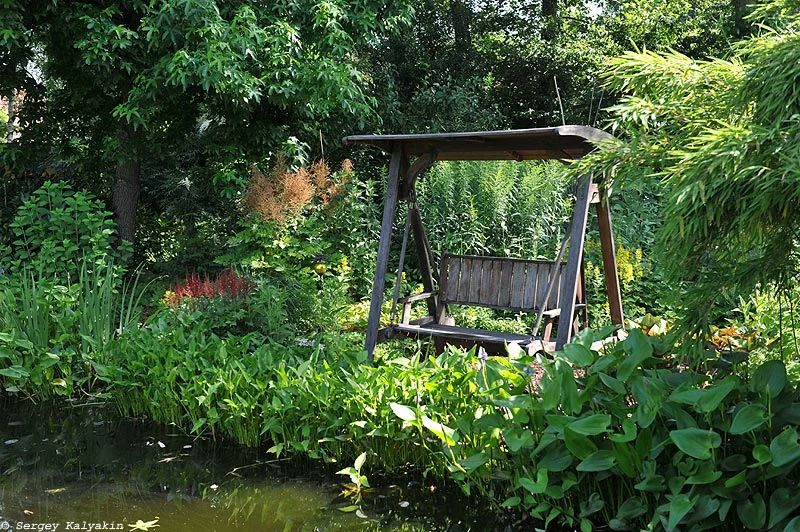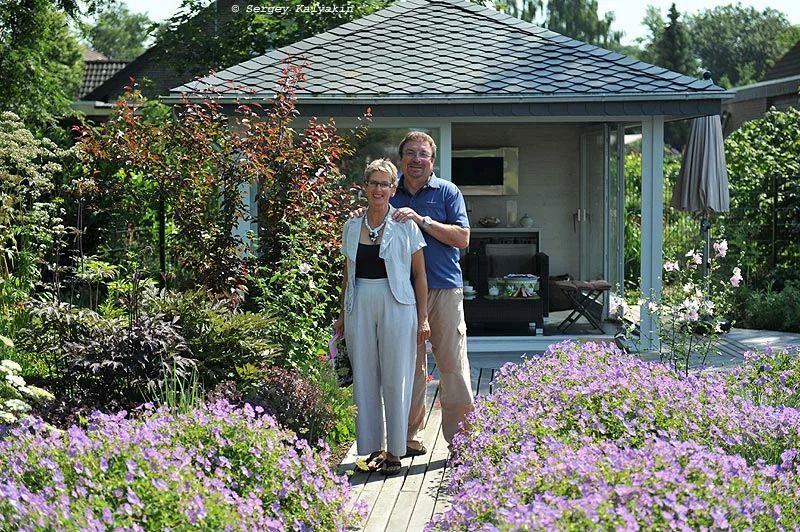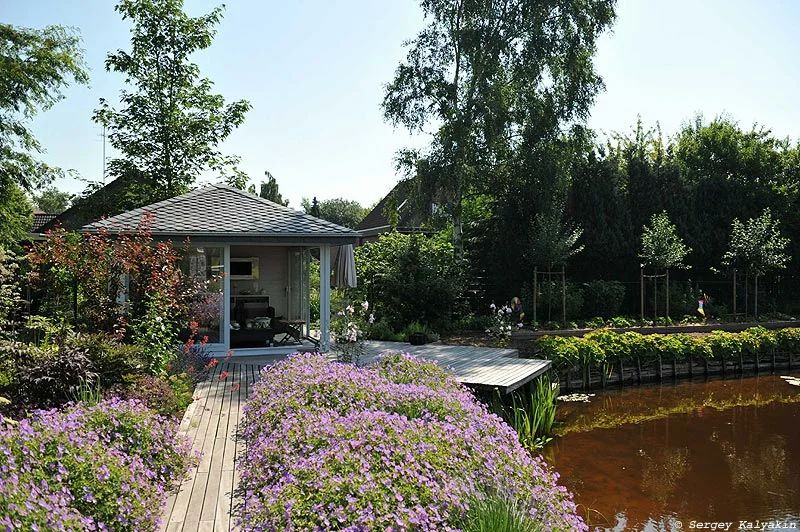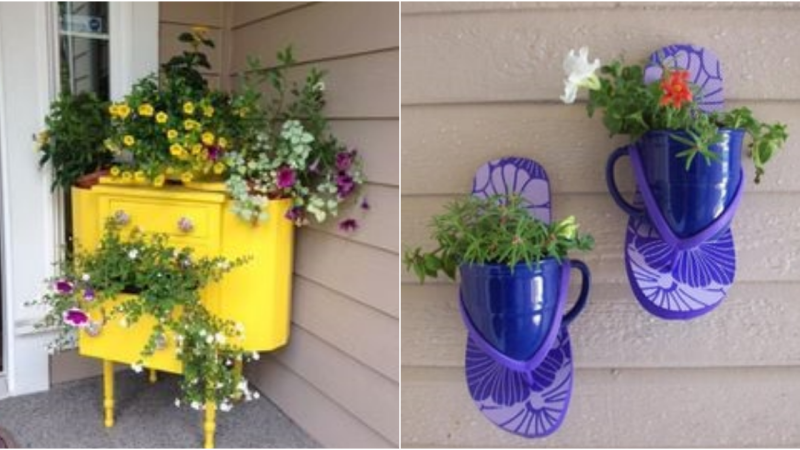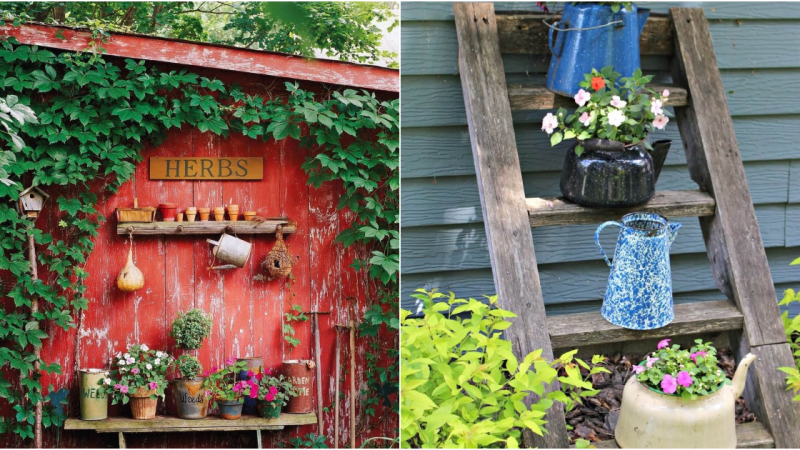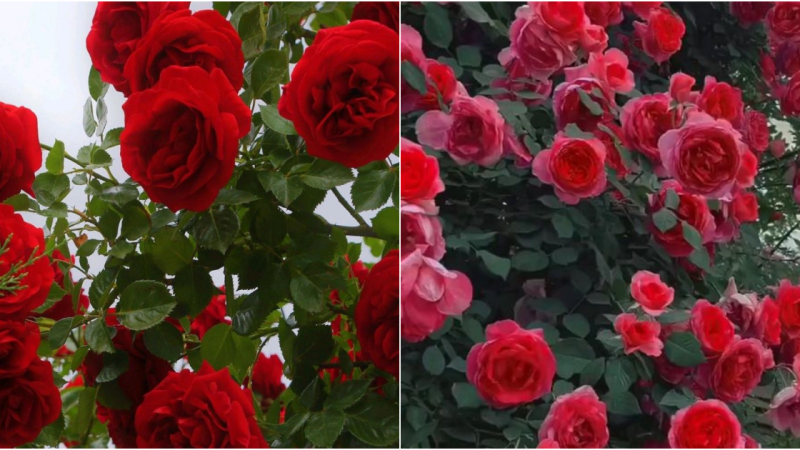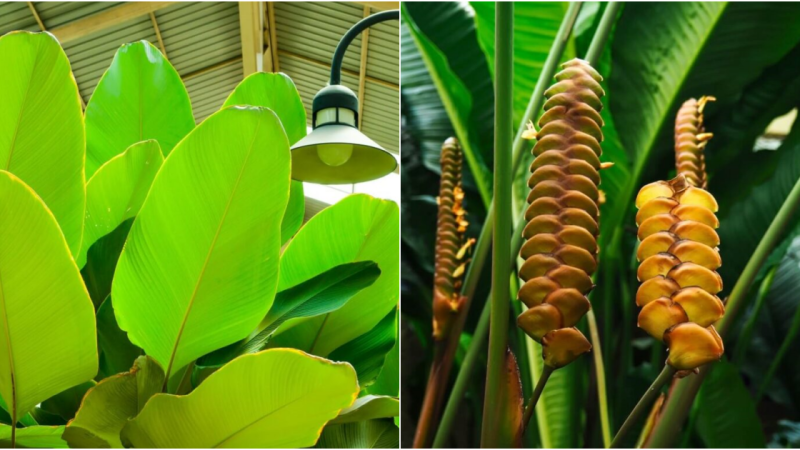Creating a Natural Oasis: The Beauty of the Garden and Ponds
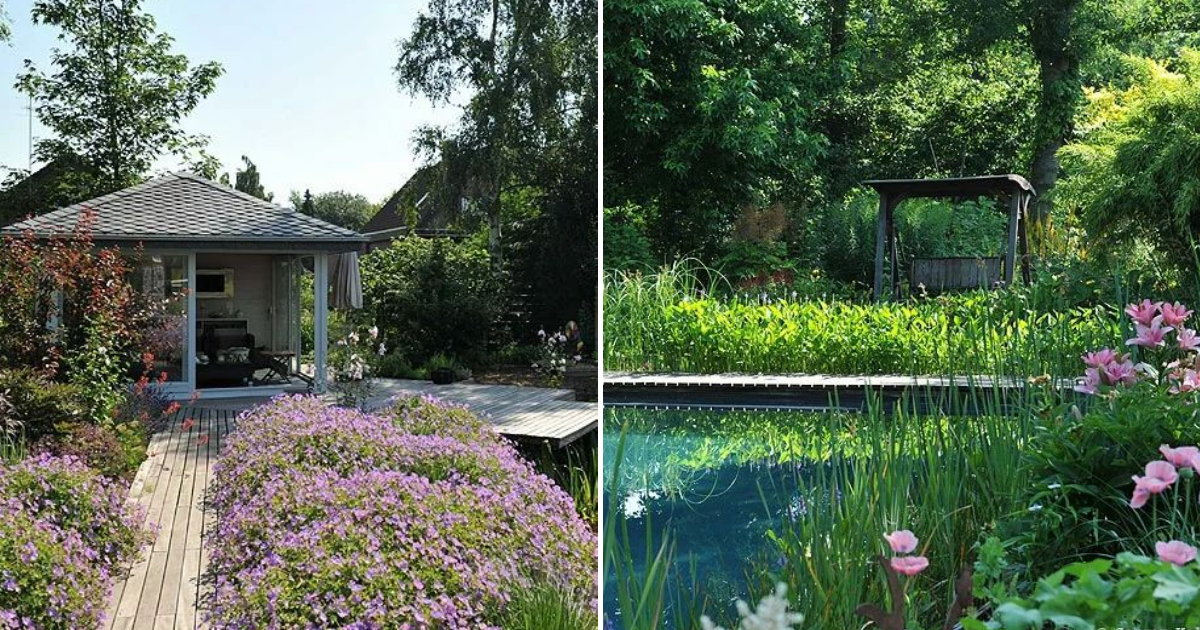
Over forty years ago, Renate and Klaus Mainhard purchased a piece of land in Lower Saxony. The main reason for choosing this particular plot was that it bordered a large pond, and both Renate and Klaus loved swimming.
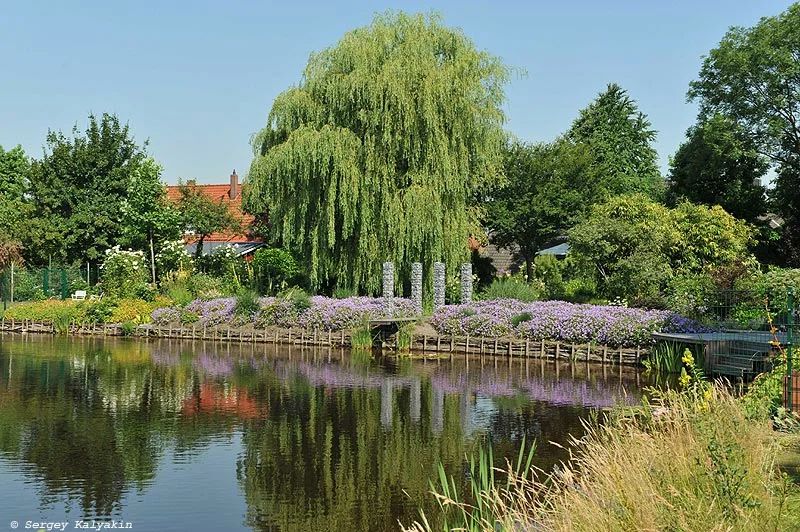
Although they didn’t own the pond itself, the couple thought they would be able to swim in it. However, their disappointment was great when the pond was soon sold, and the new owner started breeding fish in it. The neighboring property owners were no longer allowed to swim in it.
This is how the idea of creating their own pond was born. The Mainhard spouses critically evaluated their own plot – trees and shrubs grew on both sides of the house, and a lawn stretched between them. In general, it was a typical, dull German garden. In one of the gardening magazines, Renate saw a beautiful water garden. Klaus contacted a Dutch landscape architect named Henk Weers. In just four weeks, the Dutchman created a new garden with a swimming pool and two large natural-style ponds.
Of course, excavators and loaders had to work hard, moving massive amounts of soil. During this time, the area behind the house resembled a lunar landscape. However, the excavated earth for the ponds allowed them to slightly raise the overall level of the plot and create a small slope for a stream in the far corner of the garden.
Here, in northwest Germany, the sound of water reminds Renate of the mountain waterfalls in the Black Forest, where she was born. The Mainhard couple was lucky – the sandy soils on their plot had a stable structure, holding up so well that the walls of the ponds did not need to be reinforced with concrete. It was enough to level them.
The basins of the ponds were lined with thick waterproof film without geotextile, as there were no stones in the soil. The only difficulty they encountered was pumping out seepage water from the excavated pits. The groundwater here was at a level half a meter below the surface.
When walking on the central decking, it seems as though the ponds flow into each other, and you are above the water. However, these are three completely separate bodies of water, and the decks are simply a clever visual solution. Moreover, they are laid out in such a way that the garden cannot be seen in its entirety at once – one has to explore it.
The separation of the ponds makes sense: the swimming pool is filled with drinking water. It is chlorinated once a week. A sand filter cleans the water from fine particles of dirt, and an ionizer saturates the water with copper ions, which inhibit the growth of algae.
The transition from the edge of the swimming pool to the flowerbeds looks natural – the landscape architect planned a place for planting undemanding shoreline plants. Reed and bulrushes have adapted to the chlorinated water and do not overgrow.
Both natural ponds are filled with spring water. Due to the high iron and humic acid content, it appears brownish and less transparent. But this suits the Mainhard couple just fine – who wants to scrutinize the bottom anyway? Thanks to the overgrown Pontederia, the water in the natural ponds remains fairly clean.
The natural ponds do not require special maintenance – every couple of years, a thick layer of silt and leaves that have accumulated on the bottom is removed with a large net. In late autumn, aquatic plants are pruned, and the plant waste is placed in a compost pile. This helps reduce nitrogen levels in the water and significantly reduces algae growth. Overall, the Mainhard spouses are confident that they spend less time on maintenance than in regular gardens.
By the way, they divided the work: Renate takes care of the flower beds, occasionally replanting flowers and experimenting with new combinations. Klaus takes care of pruning trees and shrubs and everything related to pond equipment. They have plenty of free time, and they spend it in the pool. They open the bathing season in April when the water temperature reaches 14 degrees and close it at the end of October when the water temperature drops below 10 degrees.
The view from the garden to the large pond is adorned with decking and gabion columns, along with masses of Geranium ‘Rozanne.’ It is one of the best ground cover plants for mass planting. It blooms abundantly and continuously from May until the first frost. Bees also love it. Previously, there was a living hedge of Leyland cypress in this spot.
But two years ago, the Mainhard couple was incredibly lucky – that very large fish pond was put up for sale again, and they purchased it. They are gradually developing the shoreline – they have placed a garden house where they can sit comfortably in the evenings and gaze at the water’s surface. They have started planting water lilies and irises in the pond, and they have added Pontederia, Darmera, and irises to the shoreline area.
They have also set up a small vegetable garden – it’s always nice to have your own veget
